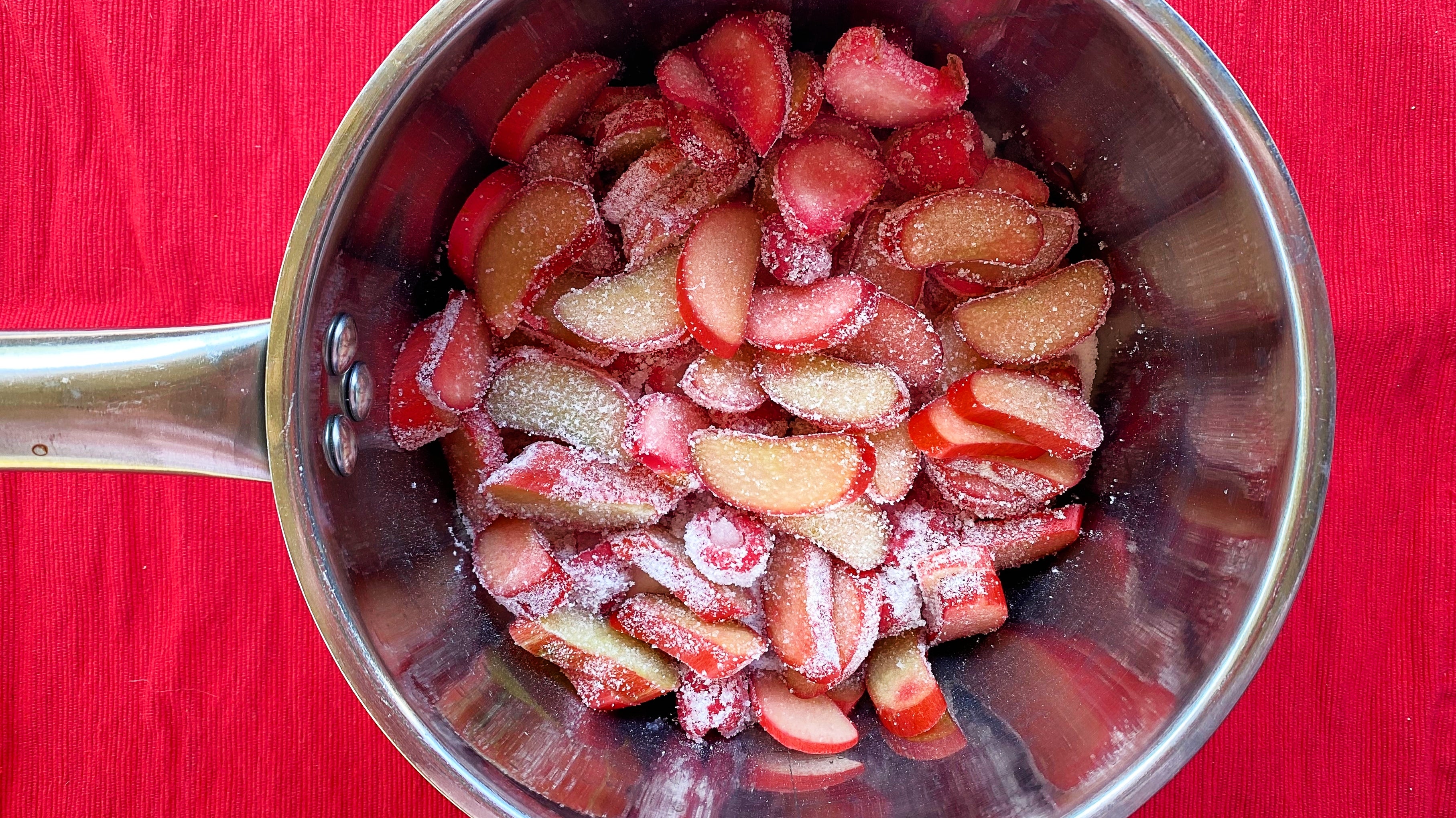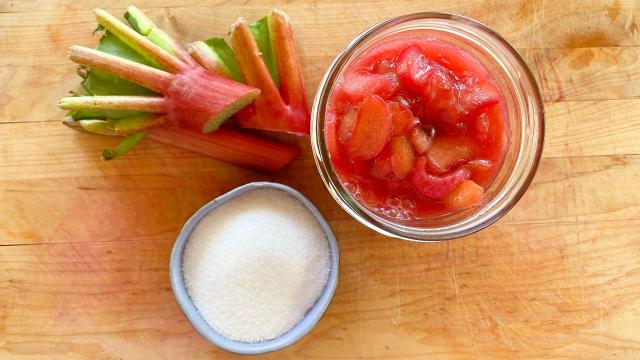As you age, you begin to accept certain truths about yourself. For example, I know that I will never take up pole dancing, enjoy overnight oats, or get into canning. When it comes to that last one, my garden isn’t prolific enough to justify it but, more importantly, I don’t want to. My jam needs are met by Bonne Maman’s strawberry preserves and my stepmom’s pepper jelly, and I’m more of a compote gal anyway.
Compote, for the unfamiliar, is a fancy-sounding word for a simple sauce. It is made of fruit and sugar, cooked for a much shorter time than jam or jelly, and with far less precision. Compote can be loose and saucy or thick and glossy; it’s entirely up to you.
The ratio of fruit to sugar is also up to you, and will vary depending on the inherent sweetness of the fruit. I’ve seen “healthy” compote recipes that call for mere teaspoons of sugar and several cups of fruit, but I use a little more. I start with two tablespoons of sugar for every cup of fruit, and add more to taste if I think it needs it.

Another way compote usually differs from jam or other preserves is the presence of discernible fruit pieces. You only need to cook your compote until the fruit releases its juices and softens. Usually, this means bringing it to a boil, then letting it simmer for a couple of minutes. And that’s it; you just made compote.
If you cook your compote for too long, and the fruit breaks down into mush, don’t worry about it. That’s a sauce, and sauce is good too. You can also strain the sauce through a fine mesh sieve and make a syrup. I did this with a raspberry-rhubarb compote that got real mushy, and used the syrup to flavour some iced tea. (I’m drinking that tea right now, and it is incredible.)
If you want it thick, you can add a cornstarch slurry, but there’s nothing wrong with keeping things loose. You can also add flavored syrups (like this lemon syrup), or extracts (like vanilla or almond). If you do go the slurry route, try using amaro or brandy instead of water when making your slurry. I added some Campari to my rhubarb compote, and boy, oh, boy.
You can use pretty much any fruit to make your compote — fresh or frozen, pretty or ugly, it’s all great. You can also use multiple fruits in a single compote. (This is legal.) It’s an easy way to use up fruit that is on the edge of turning, even if you have a whole lot. And compote freezes well — I just finished off last year’s Hood strawberry compote, and I am saddened to see it go.
If you need a recipe to embark on your compote journey, I recommend an easy rhubarb compote. Rhubarb is in season, after all, and turning it into a compote allows you to eat it on a wide variety of foods (pancakes and ice cream being my own favourites).
Easy Rhubarb Compote
Ingredients:
- 2 cups washed and sliced rhubarb (No leaves — those are toxic.)
- 1/4 cup sugar
- Optional: Cornstarch slurry made with 1 tablespoon of cornstarch and 1 tablespoon of Campari
- Optional: A capful of vanilla extract
Toss the fruit and sugar together in a medium sauce pan. Bring to a boil, stirring occasionally, then reduce the heat and simmer for 2 minutes or so, until the rhubarb is soft but still keeping its shape.
Taste and add more sugar if needed. If you want it thick and glossy, add a little bit of the slurry and let simmer for 30 seconds more. Remove from the heat and stir in the vanilla if using. Compote will last two weeks in the fridge and several months in the freezer.

Leave a Reply
You must be logged in to post a comment.